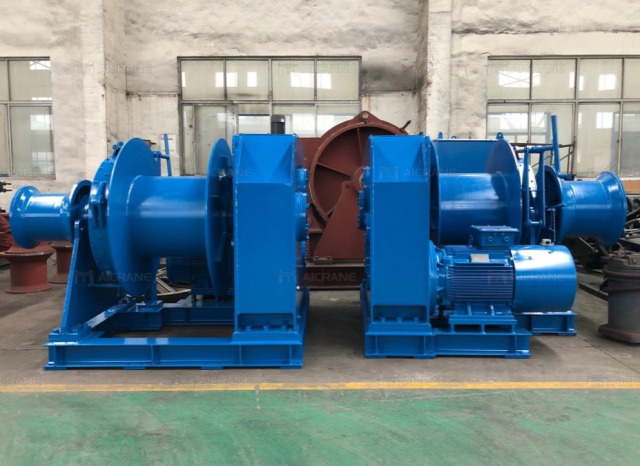Marine electric winches are critical equipment used in a variety of maritime operations. These powerful and versatile devices require regular inspection and maintenance to ensure their safe and reliable performance. In this article, we will explore the importance of inspecting and maintaining marine electric winches. By following proper inspection procedures and conducting routine maintenance tasks, operators can identify potential issues early on, prevent equipment failure, and prolong the lifespan of the winches, contributing to safe and efficient marine operations.

Regular Inspection Schedule
Implementing a regular inspection schedule is essential for marine electric winches. Conduct visual inspections before and after each use to check for any signs of damage, wear, or loose connections. Pay attention to the condition of cables, electrical components, gears, and control mechanisms. Inspect the drum and the spooling of the wire or rope to ensure proper alignment and smooth operation. A regular inspection schedule helps detect potential issues and allows for timely maintenance interventions.
Electrical Components and Connection
Electric winches rely on electrical components and connections for their operation. Regularly inspect these components to ensure they are in good condition. Check for loose or corroded connections, damaged cables, or frayed wires. Test the operation of switches, control panels, and emergency stop buttons. Inspect and clean electrical contacts and terminals to prevent corrosion and ensure efficient power transmission. Address any electrical issues promptly to maintain the reliability and safety of the marine winch system.
Lubrication and Mechanical Components
Proper lubrication is crucial for the smooth and efficient operation of marine electric winches. Regularly inspect the mechanical components, including gears, bearings, and shafts, and apply appropriate lubricants as recommended by the manufacturer. Monitor the condition of seals and gaskets to prevent water ingress and corrosion. Clean and grease the drum and spooling surfaces to maintain proper traction and prevent wire or rope damage. Adequate lubrication extends the lifespan of the winch and reduces the risk of equipment failure.
Load Testing and Brake Inspection
Periodically conduct load testing to assess the performance and safety of the winch. This involves testing the winch under different load conditions to ensure it can handle the specified load capacity. Monitor the operation of the brake system during load testing to ensure its effectiveness in holding the load securely. Inspect the brake components for wear or damage and adjust the brake tension if necessary. Regular load testing and brake inspection help maintain the winch's safety and reliability.
Environmental Factors
Environmental factors can impact the performance and longevity of marine electric winches. Inspect the winch for signs of corrosion, rust, or damage caused by exposure to saltwater, humidity, or harsh weather conditions. Consider applying protective coatings or corrosion inhibitors to vulnerable components. Clean the winch thoroughly after use in saltwater environments. Protect the winch from excessive heat, UV radiation, and other environmental hazards that can degrade its performance and structural integrity.
Manufacturer's Guidelines and Professional Assistance
Adhere to the manufacturer's guidelines for inspection and maintenance procedures specific to your marine electric winch model. Follow their recommended maintenance schedule and use approved spare parts and lubricants. If in doubt, seek professional assistance from qualified technicians who specialize in marine winch maintenance. Their expertise and experience ensure that the winch is inspected and maintained correctly, reducing the risk of equipment failure and enhancing overall safety.
Conclusion
Regular inspection and maintenance of marine electric winches are vital for ensuring safe and reliable operations. By implementing a systematic inspection schedule, addressing electrical components, lubricating mechanical parts, conducting load testing, considering environmental factors, and following manufacturer guidelines, operators can maximize the lifespan and performance of their winches. A well-maintained electric winch contributes to the efficiency and safety of marine operations, allowing for smooth and effective handling of loads and ensuring the reliability of vessel mooring and other critical tasks.

